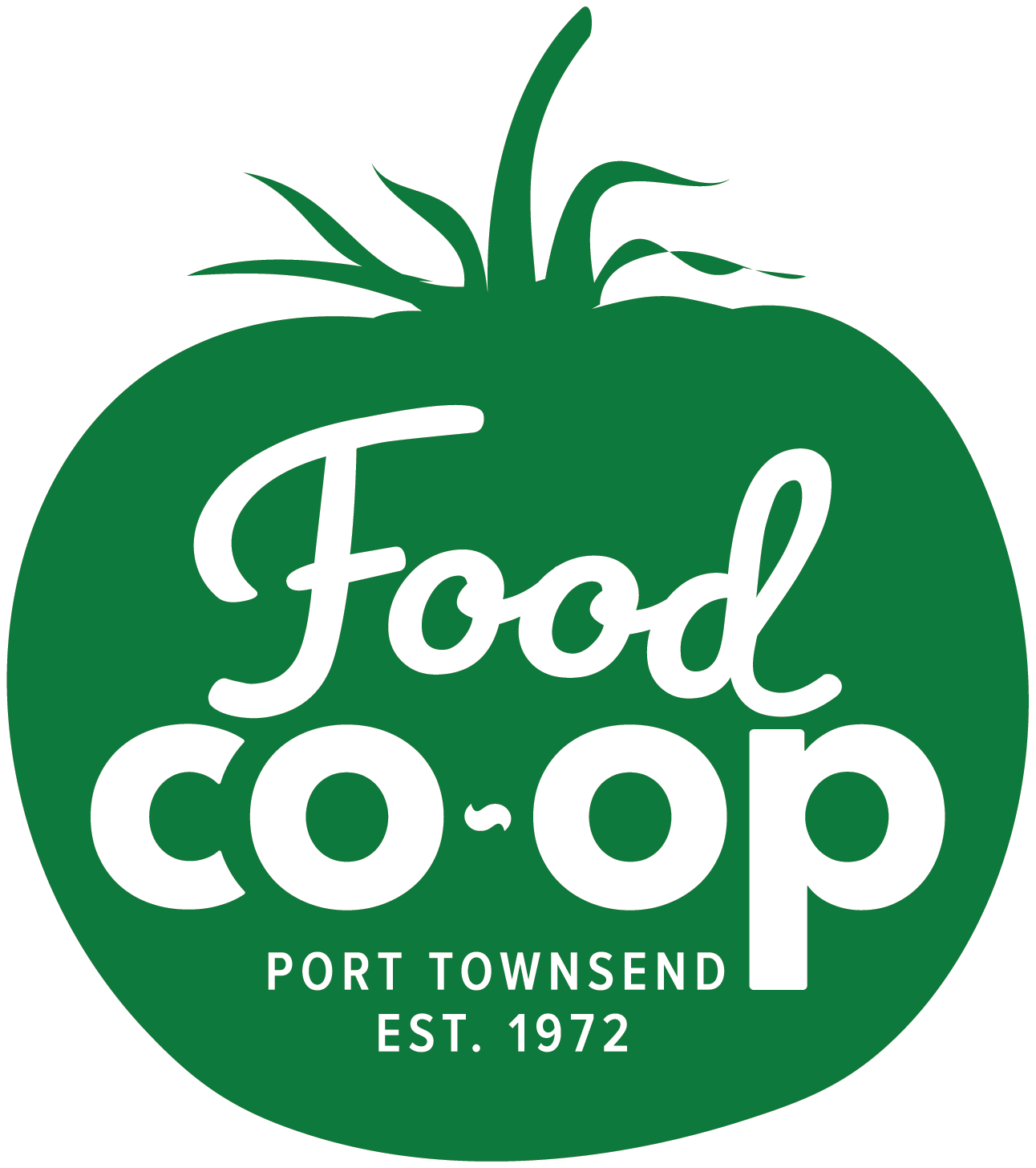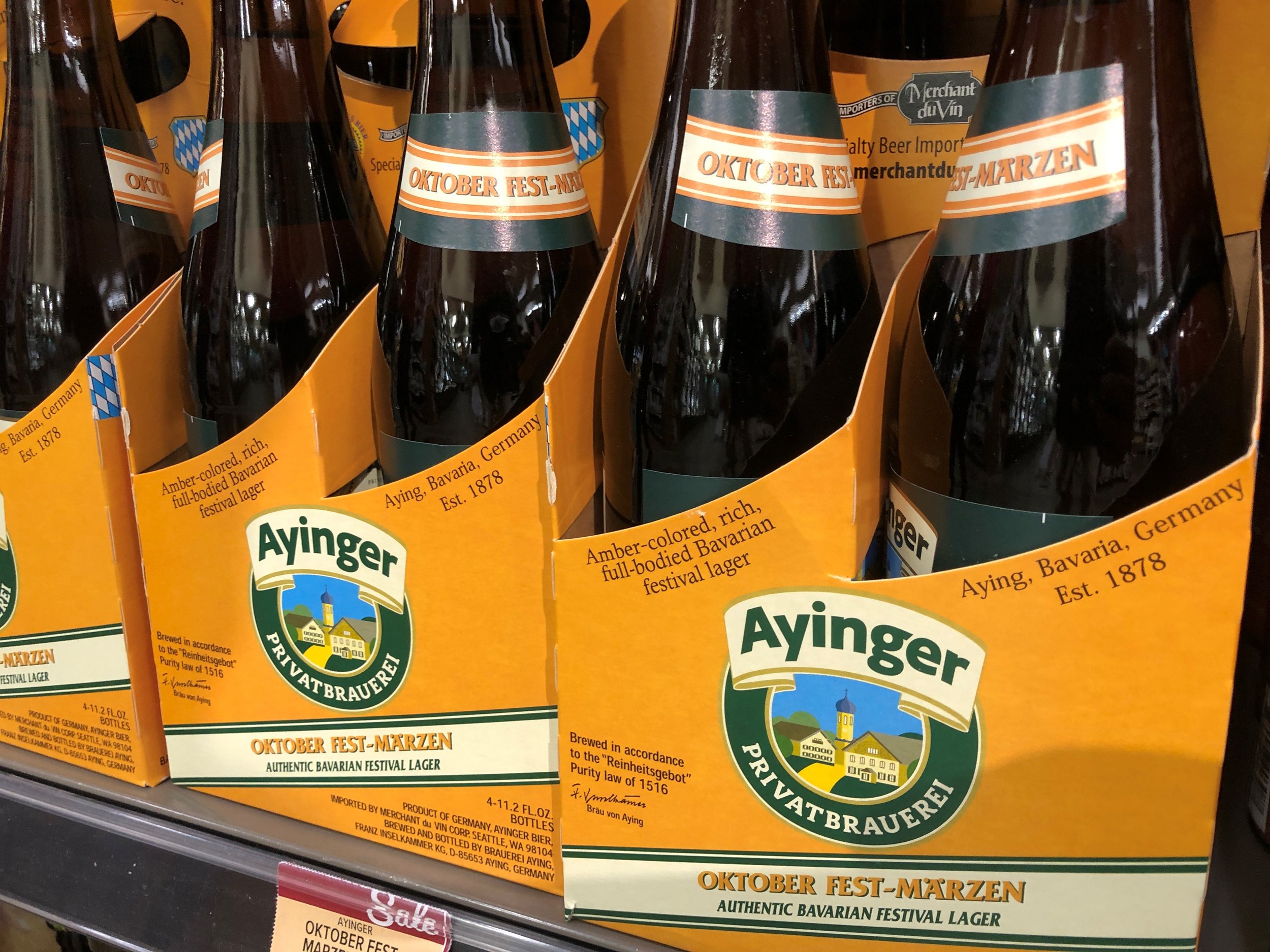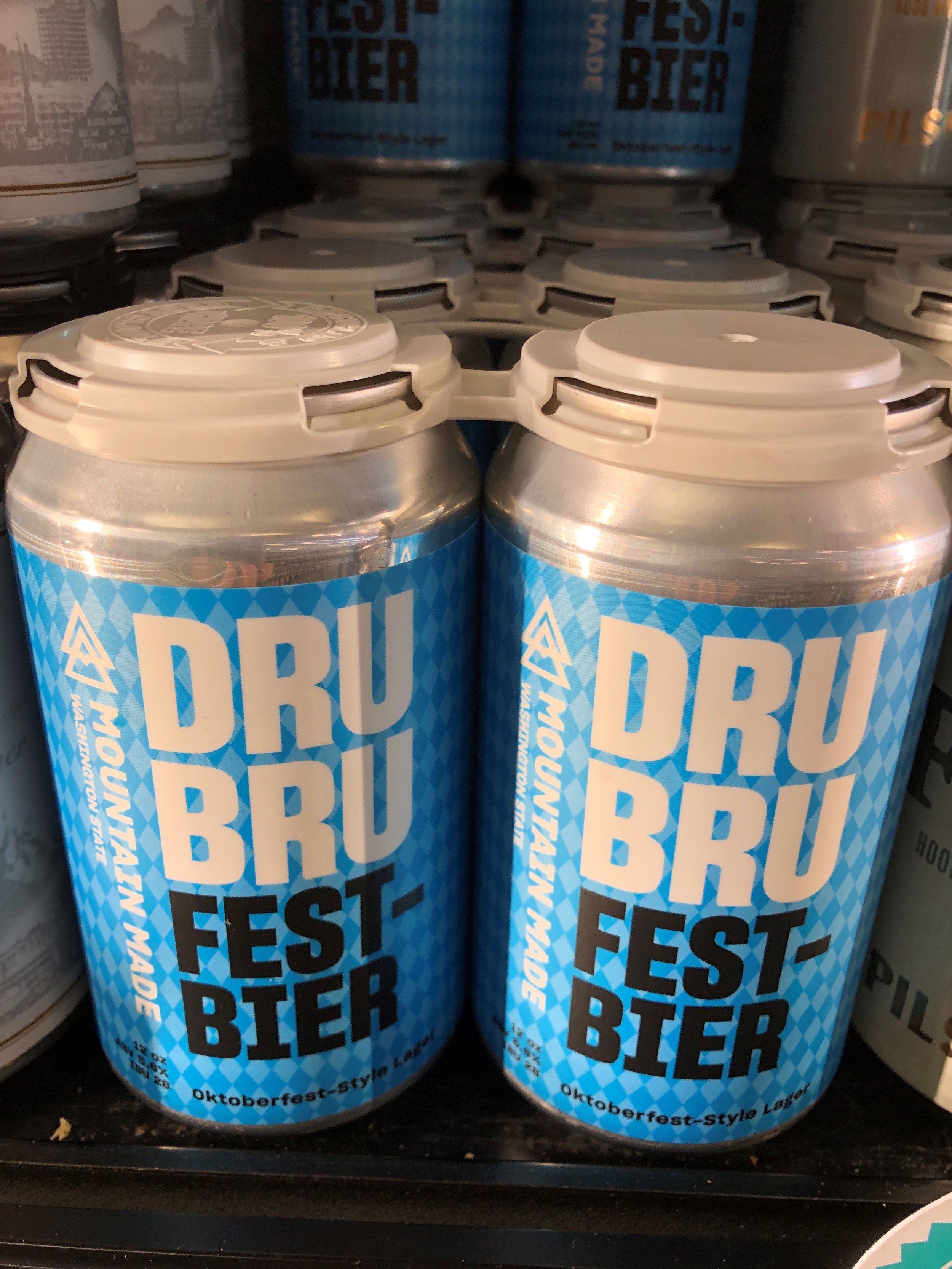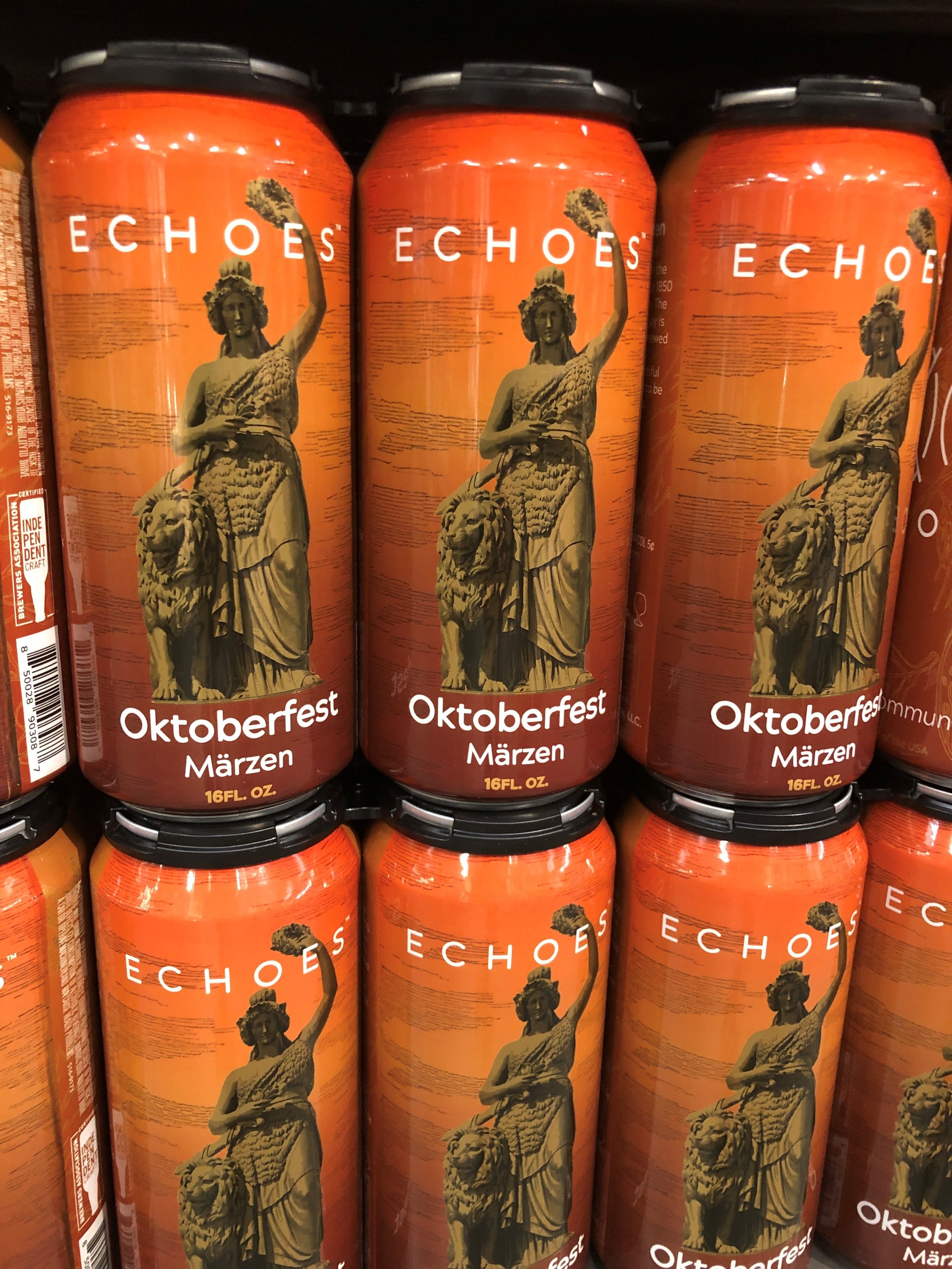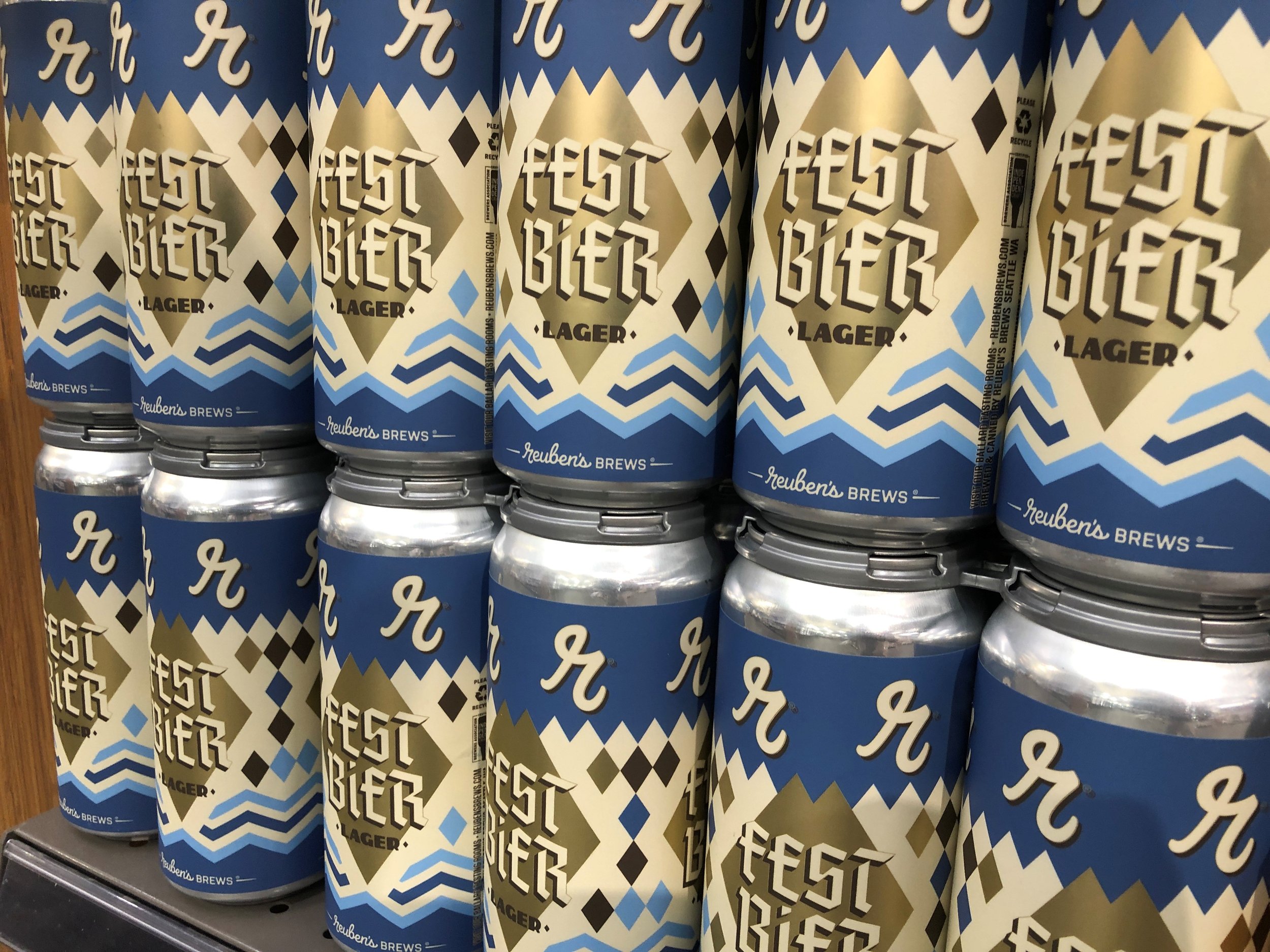Oktoberfest at the Food Co-Op
by James Robinson, Co-op Beer and Wine Buyer
With a variety of local festbiers and märzens, the Food Co-Op is ready to help you celebrate Oktoberfest in style. The festivities began on Sept. 17 and last until October 3, and over the weeks, shoppers can find Oktoberfest beers displayed on the end cap adjacent to aisle five and in the Aisle 5 cold case.
But what is Oktoberfest about anyway?
Oktoberfest began on Oct. 12. 1810, when Bavaria’s Crown Prince Ludwig married Princess Therese of Saxony-Hildburghausen and a multi-day celebration of drinking and feasting ensued. Fast forward 200 years, and the festival has become an annual worldwide phenomenon celebrating all things Bavarian – particularly beer.
Where is it celebrated?
Oktoberfest celebrations can be found all over the world, but the main event is in Munich, Germany where the first Oktoberfest was held.
How is it celebrated?
With beer of course. And while Oktoberfest is often associated with beer, the festival’s tradition go beyond that. In addition to beer tents, there’s music, Bavarian clothing and food, glorious food … spit-roasted chickens, schweinebraten (roast pork), schweinshaxe (roasted ham hock), würstl (sausages), brezen (pretzels), käsespätzle (cheese noodles), reiberdatschi (potato pancakes) and sauerkraut. Follow this link to a variety of Bavarian-Oktoberfest recipes: https://www.foodandwine.com/cooking-techniques/11-foods-you-need-oktoberfest-feast
Festbier vs. Märzen
Märzen
Märzen is a German amber lager – dark copper to reddish brown in color, crisp but also smooth, with sweet toasted bread aroma and faint hints of spice. It is sweetish but with a noticeable Noble Hops bite and a dry finish. The typical märzen ABV is 5 to 6%.
The Märzen style, as we know it today, was introduced by the Spaten brewery in 1841 and was then further tweaked and developed.
Its origins, however, likely go back farther than that, and possibly back to 1553 when summer brewing was prohibited in Germany. The name Märzen means ‘March beer.’ It applies to beers brewed in March and left to lager (condition) in cold cellars over the course of the summer, to be tapped in early fall. Summer brewing was prohibited for a long time in Germany in order to ensure good beer quality and prevent spoilage in high temperatures.
These ‘March’ beers were brewed with higher gravity (alcohol content) than regular lagers in order to have the longer shelf life needed to make it to the harvest festivals. They were much darker than today and only became amber in color after the Spaten brewery experimented with lighter malts and developed the style we are familiar with today, often referred to as modern Märzen.
Oktoberfestbier and festbier
Oktoberfest beer (Oktoberfestbier) is formally defined as a beer brewed by one of the six big Munich breweries allowed to serve their product on the grounds of the Oktoberfest celebration.
These used to be amber lagers but today are much lighter in color.
Festbier is a strong golden German lager with a long-lasting white head. It has traits similar to Helles Lager and Maibock – malty backbone, spicy and floral hop bite, moderately full body and a dry finish. The ABV is 6 to 6.5%.
Festbier was pioneered by Paulaner, especially to be served for Oktoberfest. Eventually, all the other breweries allowed to serve on the Wiesn made their own versions and today Festbier is the lager exclusively brewed for and served at the Oktoberfest.
